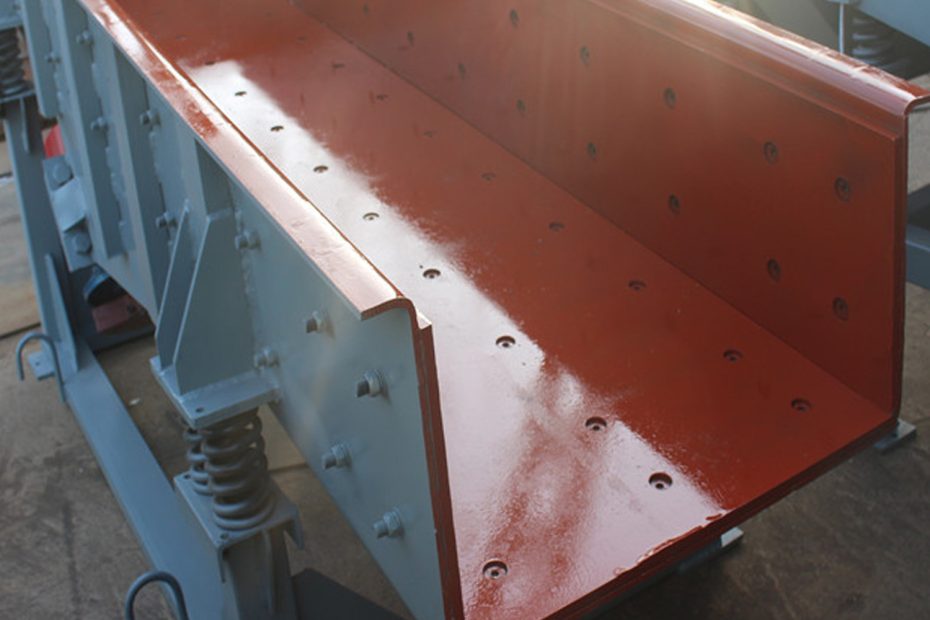The electromagnetic vibrating feeder is a kind of electromechanical feeding equipment. It is used to uniformly or quantitatively supply materials from the storage bin or other storage equipment to the receiving equipment. It is an essential equipment for the automation of flow operations. .
The electromagnetic vibrating feeder equipment is small in size, light in weight, simple in structure, easy to install, has no rotating parts and does not require lubrication, is easy to maintain, and has low operating costs.
The electromagnetic vibrating feeder is a relatively complete elastic system with dual mass points directional forced vibration. The entire system works in a low critical resonance state. It mainly uses an electromagnetic exciter to drive the trough to vibrate reciprocally at a certain inclination angle to move the material along the trough. The electromagnetic vibrating feeder can instantly change and open and close the material flow, so the feeding amount has high accuracy and can realize centralized control and automatic control of the production process.
In the realm of industrial automation, the electromagnetic vibrating feeder emerges as a versatile and invaluable component.
Five Key Features Of Electromagnetic Vibrating Feeder
- Simple Structure : The electromagnetic vibrating feeder is characterized by its straightforward design. Its uncomplicated structure simplifies maintenance and operation, making it an ideal choice for various industrial settings.
- Stable Operation : One of the standout features of this feeder is its ability to maintain stable operation. This reliability is essential in automated production processes, ensuring consistent material supply.
- Low Power Loss : Efficiency is paramount in industrial settings, and the electromagnetic vibrating feeder excels in this regard. Its low power consumption minimizes energy loss, contributing to cost-effectiveness.
- Adjustable Feeding : This equipment allows for stepless adjustment of the feeding rate. This adaptability is crucial in processes that demand precise control over material flow.
- Automation Compatibility : The electromagnetic vibrating feeder seamlessly integrates with automated production systems. Its capabilities contribute to the goal of achieving complete production automation.
Applications of Electromagnetic Vibrating Feeders
| Application | Description |
|---|---|
| Block Material Supply | Used to provide blocks of materials efficiently. |
| Granular Material Feed | Ideal for consistent supply of granular substances. |
| Powdery Material Flow | Ensures precise and controlled flow of powders. |
| Chemical Industries | Used for handling various chemicals in production. |
| Mining Operations | Valuable in the mining industry for material supply. |
| Food Processing | Maintains consistency in food processing lines. |
Top 5 Advantages of electromagnetic vibrating feeder
- Precision : The electromagnetic vibrating feeder excels in providing precise material supply, crucial in industries where accuracy is paramount.
- Cost-Efficiency : With its low power consumption, this equipment helps in reducing operational costs, contributing to overall cost-efficiency.
- Reliability : Stable operation and low wear and tear make this feeder a reliable choice for industrial automation.
- Adaptability : The stepless adjustment feature allows it to adapt to changing production needs seamlessly.
- Versatility : The ability to handle various types of materials extends its usability across industries.
Conclusion
Electromagnetic vibrating feeders simplify industrial material supply.Their stable operation and low power consumption enhance reliability and cost-efficiency.These feeders seamlessly integrate into automated production systems.Their versatile application makes them indispensable in various industries.
The electromagnetic vibrating feeder offers a blend of simplicity, reliability, and adaptability that’s invaluable in automated production processes. With its precise material supply and cost-effective operation, it’s a cornerstone of modern industrial automation.
